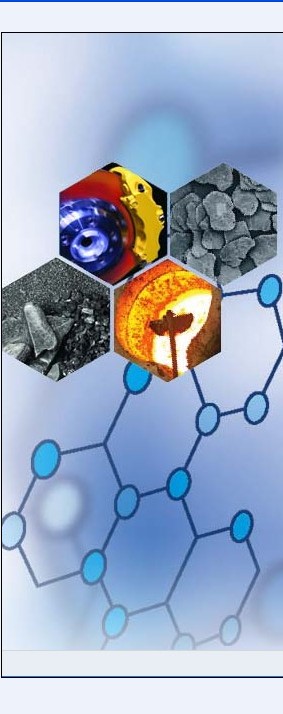Introduction to Natural Graphite

General Petrological Description:
Natural graphite is formed in either metamorphic or igneous environments. High temperature and high pressure are the pre-requisites that affect the conversion of amorphous carbon materials to crystalline graphite. Graphite is never formed in a sedimentary environment although it potentially could be found in sedimentary systems as a product of erosion. Occurrences in metamorphic environments are much more common then those in igneous environments.
Since graphite is virtually pure carbon, its formation at high temperature requires that the �local� oxygen concentration (in the earth�s crust) be low. Graphite typically forms only under reducing conditions since at high temperature it combines with oxygen to form transient species such as carbon monoxide (CO) and carbon dioxide (CO2). Under certain conditions graphite or pre-graphitic carbon could act as a geological reducing agent and extract oxygen from adjacent mineral species which contain it, i.e. hematite.
The form of carbon present in the country rock prior to the formation of graphite is not always clear. In some cases, such as amorphous graphite which is known to form from the metamorphism of previously existing anthracite coal seams, the origin of the �proto-carbon� is apparent. This is also true for certain deposits of flake graphite, which are believed to have formed from the metamorphism of deep oceanic, deposited organic carbon. However, in certain cases the origin of the �source� carbon of a graphite deposit is not clear. For example, the presence of flake graphite in marble deposits seems to indicate a simple conversion of �carbonate� to carbon sometime during the metamorphism of the original limestone deposit. However, the presence of oxygen in calcium carbonate would seem to preclude the highly reducing environment required to form and maintain graphitic carbon. Is it possible that the pre-marble limestone contained some free amorphous carbon left over from ancient benthic organisms, and that these �lenses� of organic carbon metamorphosed into graphite?
Another graphite type, know as vein graphite, is somewhat controversial regarding its origin. The most popular belief is that vein graphite formed from the �mobilization� of some carbonaceous material by geologic fluids, pegmatitic fluids perhaps, with subsequent deposition of graphitic carbon remote from the original organic carbon. In the Highlands Formation of New Jersey the author has seen first hand evidence, on a much localized scale, of the mobilization of previously existing flake graphite �attacked� by pegmatitic fluids and re-deposited as �vein graphite� two meters away from the pegmatitic contact. Other theories, a bit far fetched perhaps, claim that there is evidence that vein and flake graphite may form from the metamorphism of petroleum! An in depth analysis of how and why graphite forms is beyond the scope of this article. Suffice it to say, graphite is found in the earth�s crust in various geologic environments where solid carbon was deposited, in one form or another, and then converted by heat and pressure into graphite. Entries for each type of natural graphite, which delve a bit deeper into specific petrological aspects, can be found elsewhere on this site.
COPYRIGHT 2008-2013 Chenzhou Top Graphite Company Limited
